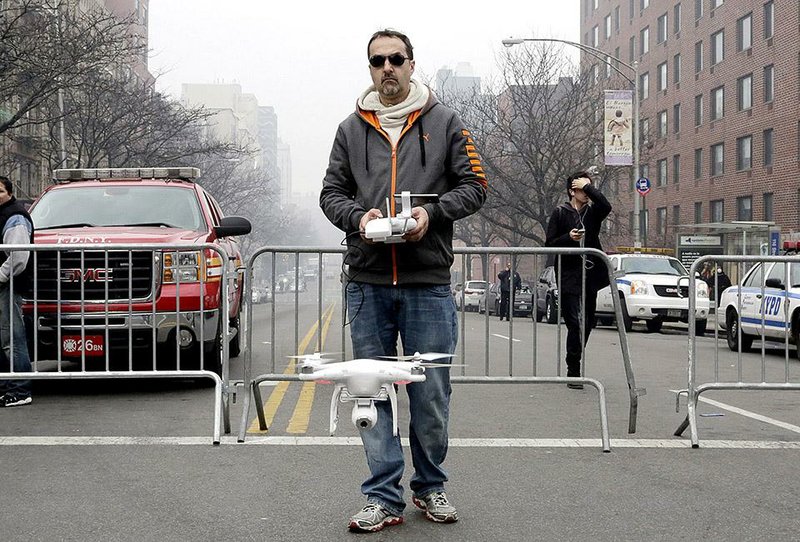WASHINGTON -- Close calls of drones flying near airplanes and crowds in the U.S. have surged over the course of this year to more than 40 a month.
The U.S. Federal Aviation Administration logged 193 cases of safety violations involving unmanned aircraft from Feb. 22 through Nov. 11, according to data released by the agency Wednesday. After receiving fewer than 10 cases a month in March and April, the agency got 41 reports in both September and October.
While drones haven't caused a traditional airplane or helicopter to crash, in some instances pilots reported "altering course to avoid an unmanned aircraft," the FAA said in an emailed statement.
The data offer a glimpse into the Wild West atmosphere to which the FAA is trying to bring order as the affordability and availability of small, unmanned aircraft create a new breed of drone operators who haven't been schooled in aviation safety.
Cases have occurred above the Hollywood sign near Los Angeles; at college football games; and at the airport used for President Barack Obama's flights, Andrews Air Force Base near Washington.
While most of the near midair collisions involve smaller private aircraft, airliner cases are also growing. Airline pilots near Trenton, N.J., and Wichita, Kan., reported seeing drones flying nearby Nov. 11, according to the FAA data.
Those data, made available after a public-records request, make up the first comprehensive account of unmanned aircraft safety incidents.
The FAA's legal authority to regulate civilian unmanned flights was upheld Nov. 18 by the National Transportation Safety Board, overturning a decision by an administrative judge to throw out the agency's first attempt to fine a drone operator.
The agency said Wednesday it has been contacting drone operators, sometimes after being notified by U.S. and local law enforcement agencies, "to educate them about how they can operate safely under current regulations and laws."
The agency and the FBI are investigating two reports by airline pilots Nov. 16 who said they flew near drones while preparing to land at New York's John F. Kennedy International Airport, and a third case near the airport Nov. 19. The three flights landed safely, according to an FAA statement.
Those reports aren't contained in the data released Wednesday by the FAA.
A separate database of voluntary pilot safety reports compiled by NASA includes four cases in which drones were spotted by airline or corporate aircraft pilots from March through September.
The FAA, following laws imposed by Congress, has attempted to oversee drones with a patchwork of different policies.
Purely recreational drone flights are permitted as long as operators stay away from traditional aircraft and get permission from controllers before taking off within 5 miles of an airport. Hobby groups, such as the Muncie, Indiana-based Academy of Model Aeronautics, suggest unmanned aircraft stay within 400 feet of the ground.
The FAA hasn't approved drone flights for commercial purposes, except for an exemption granted to six Hollywood movie makers and two oil companies in the Arctic region of Alaska. A proposed rule allowing commercial flights is scheduled to be revealed by the end of the year.
Government agencies, such as U.S. Customs and Border Protection or local law enforcement agencies, may also obtain FAA permission to fly drones under a separate process.
The FAA has faced conflicting demands from lawmakers, privacy advocates and the unmanned aircraft industry.
Even as a Congress-imposed deadline to begin integrating drones into U.S. skies by August 2015 nears, lawmakers such as Sen. Edward Markey, a Massachusetts Democrat, have sought greater restrictions on their use to protect privacy.
Five senators, including Ron Wyden, D-Ore., and John Hoeven, R-N.D., wrote the FAA on Tuesday seeking swifter action on writing drone rules and granting approvals for flights at six test ranges approved this year by the agency.
A Section on 11/27/2014

